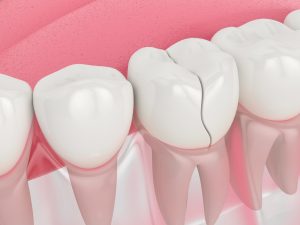Emergency Dentistry Services: Your Lifesaver for Unexpected Dental Crises
Dental emergencies can happen at any time, and it’s important to know what to do when they occur. Dr. Richard Sigismondi, DMD, offers emergency dentistry services at his West Sayville, NY, dental practice, to help patients manage dental emergencies. Dr. Sigismondi is here to explain the ins and outs of emergency dentistry services, including the most common dental emergencies, and how to handle them until you can visit Dr. Sigismondi for an appointment.
What Is Emergency Dentistry?
Emergency dentistry is a type of dental care that provides immediate treatment for dental emergencies. Dental emergencies are situations that require immediate attention from a dentist to prevent further damage or relieve pain. Emergency dentistry services are available outside of regular business hours, usually including weekends and holidays.
Benefits of Emergency Dentistry Services
Emergency dentistry services offer several benefits, including:
- Immediate Treatment: Dental emergencies can be painful and uncomfortable. Emergency dentistry services provide immediate treatment to relieve pain and prevent further damage.
- Prevents Further Damage: Dental emergencies can cause permanent damage if not treated promptly. Emergency dentistry services can prevent further damage, save teeth, and protect overall oral health.
- Saves Time: Emergency dentistry services are available outside of regular business hours, which means patients don’t have to wait until the next business day to receive treatment.
Common Dental Emergencies and How to Handle Them
Dental emergencies can manifest in various forms, and being prepared to address them is crucial. Here are some of the most common dental emergencies and the steps to take when they occur:
Toothache
A toothache can result from various causes like tooth decay, gum disease, or a cracked tooth. To alleviate a toothache until you can see a dentist, rinse your mouth with warm water and use dental floss to remove any lodged food particles. Avoid applying aspirin or pain-relief medication directly to the gums, as it can cause irritation.
Lost Tooth
If you lose a tooth, it’s imperative to act quickly. Pick up the tooth by the crown (top part) and avoid touching the root. Rinse the tooth gently with water if it’s dirty, but do not scrub it, and try to reposition it back into the socket. If reinsertion isn’t possible, store it in a container of milk and seek immediate dental attention.
Cracked or Broken Tooth
A cracked or broken tooth can be painful and unsettling. To manage it temporarily, rinse your mouth with warm salt water and apply a cold compress to the affected area to reduce swelling. Avoid chewing on the affected side.
Cut Lip
Sustaining a cut lip can occur due to falls or facial impacts. To address a cut lip, apply gentle pressure with a clean cloth or sterile gauze to the bleeding area. Then, use an ice pack wrapped in a cloth to reduce swelling.
Object Stuck Between Teeth
When an object becomes lodged between your teeth, try gently removing it using dental floss. Be cautious not to push it further in. Avoid using sharp or pointed objects that may damage your gums or teeth. If unsuccessful, promptly consult your dentist.
Lost Filling or Crown
Losing a filling or crown can cause discomfort. Temporarily protect the affected tooth by applying a small amount of dental cement until you can see your dentist. Avoid chewing on the damaged tooth. Schedule an appointment with your dentist for a permanent solution.
Broken Jaw
A broken jaw is a severe dental emergency that necessitates immediate attention. If you suspect a broken jaw, keep your head and jaw as still as possible and apply a cold compress to reduce swelling. Seek dental or emergency medical care immediately.
Bleeding Tongue or Soft Tissue Injury
Falls or facial injuries can result in a bleeding tongue or soft tissue injury. To halt the bleeding, gently apply pressure to the affected area using a clean cloth or sterile gauze. This simple yet crucial step can help promote the healing process and reduce the risk of infection. If the bleeding persists or the injury is severe, seek prompt medical attention to ensure proper care and recovery.
Frequently Asked Questions
You can help yourself avoid common dental emergencies by practicing good oral hygiene, wearing a mouthguard during sports activities, avoiding hard or sticky foods, and seeing a dentist regularly for checkups and cleanings. Please be aware that even if you take these steps, emergency dental situations may occur, so keep your dentist’s number on hand.
Many emergency dentistry providers offer extended hours and weekend availability to accommodate patients with urgent dental needs. Some even operate on holidays. It’s advisable to check with your local emergency dentist or dental clinic for their specific hours and availability.
The cost of emergency dentistry services can vary depending on the nature of the emergency and the treatment required. Most dental insurance plans cover emergency dental care, but it’s essential to check with your insurance provider to understand your coverage and any potential out-of-pocket costs. Many emergency dentists also offer payment plans or financing options.
If you encounter a dental emergency while away from home, you can search for local emergency dentists in the area or contact your regular dentist for guidance. It’s advisable to carry a dental emergency kit with essentials like dental wax, over-the-counter pain relievers, and your dentist’s contact information when traveling.



